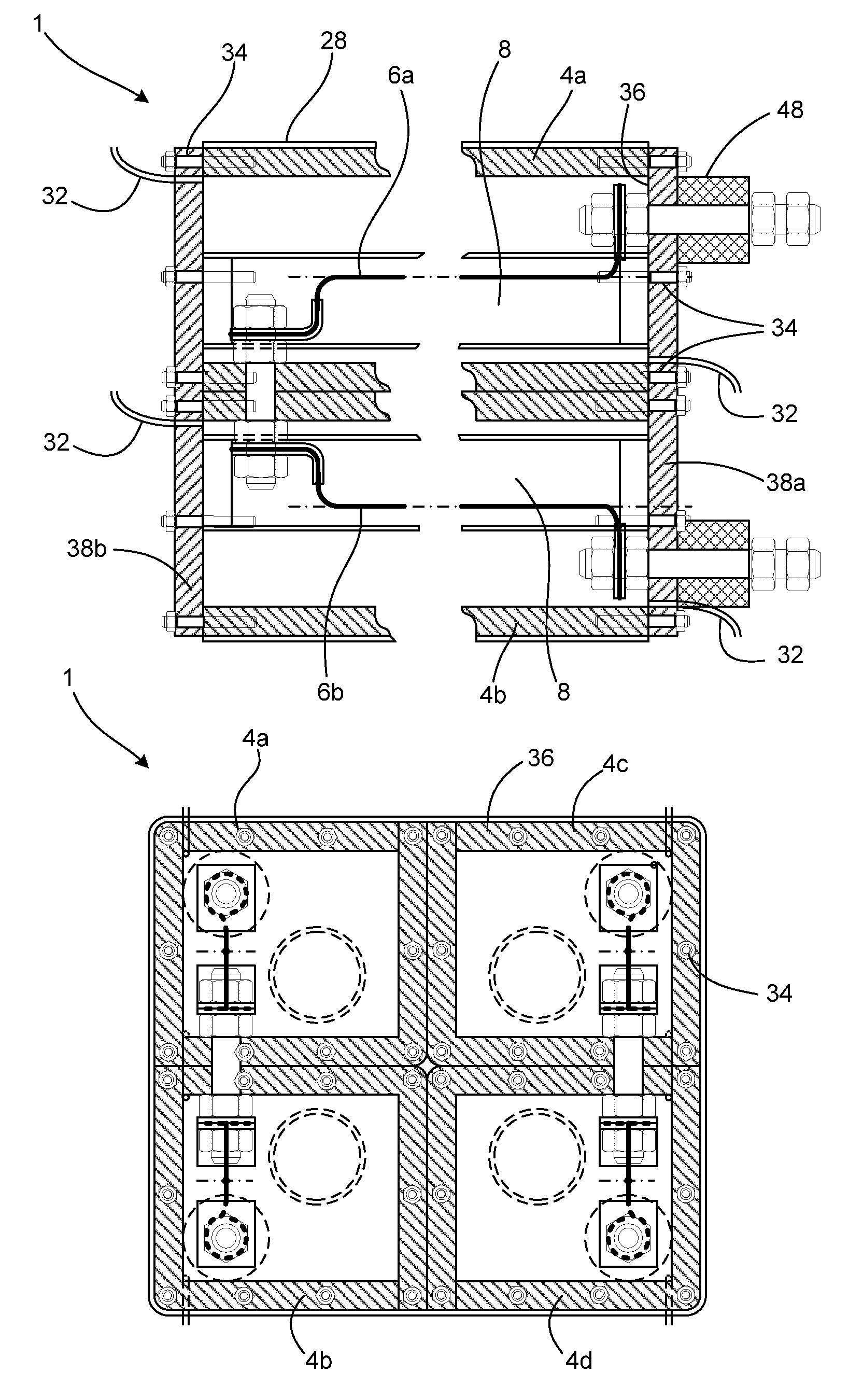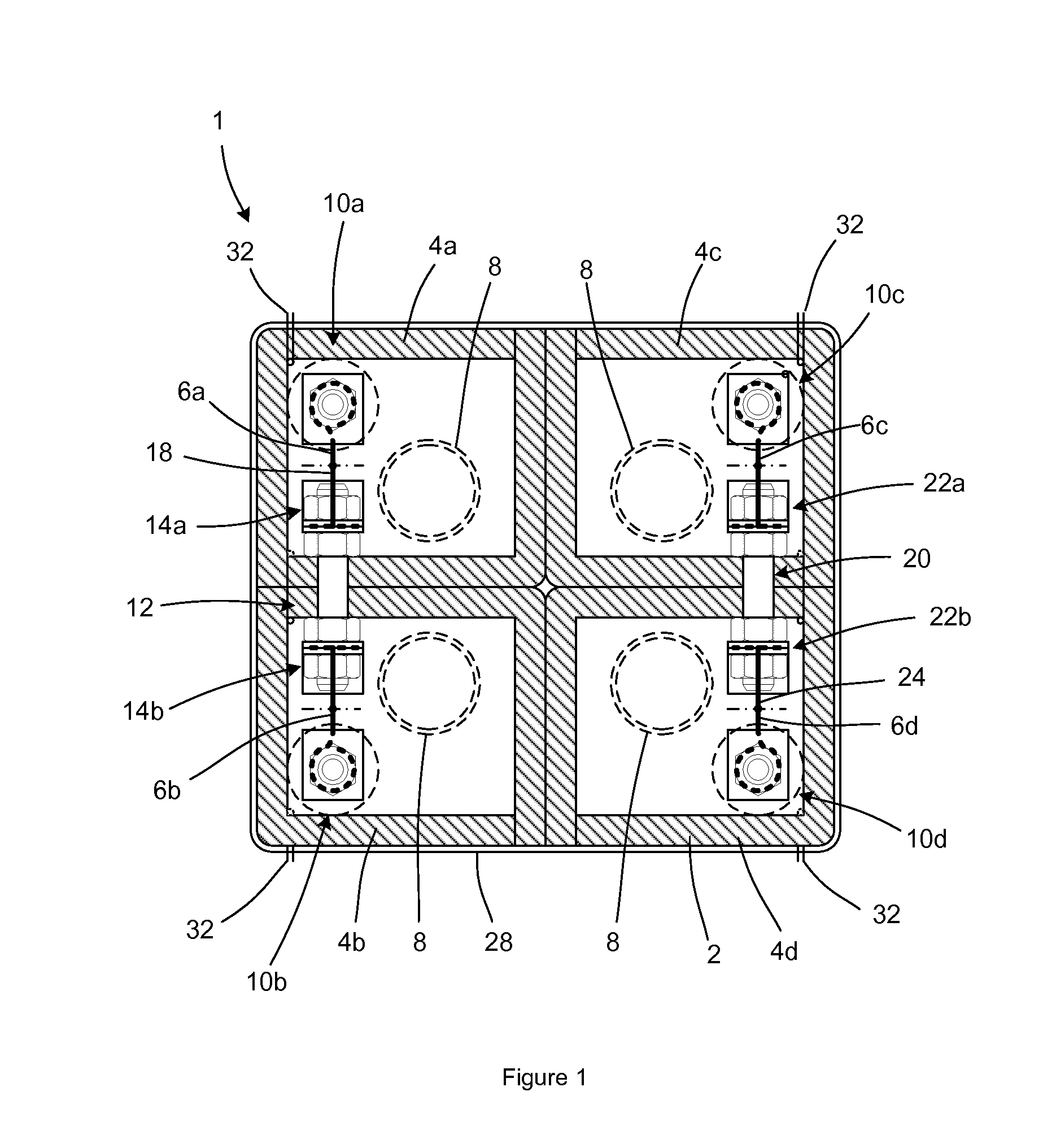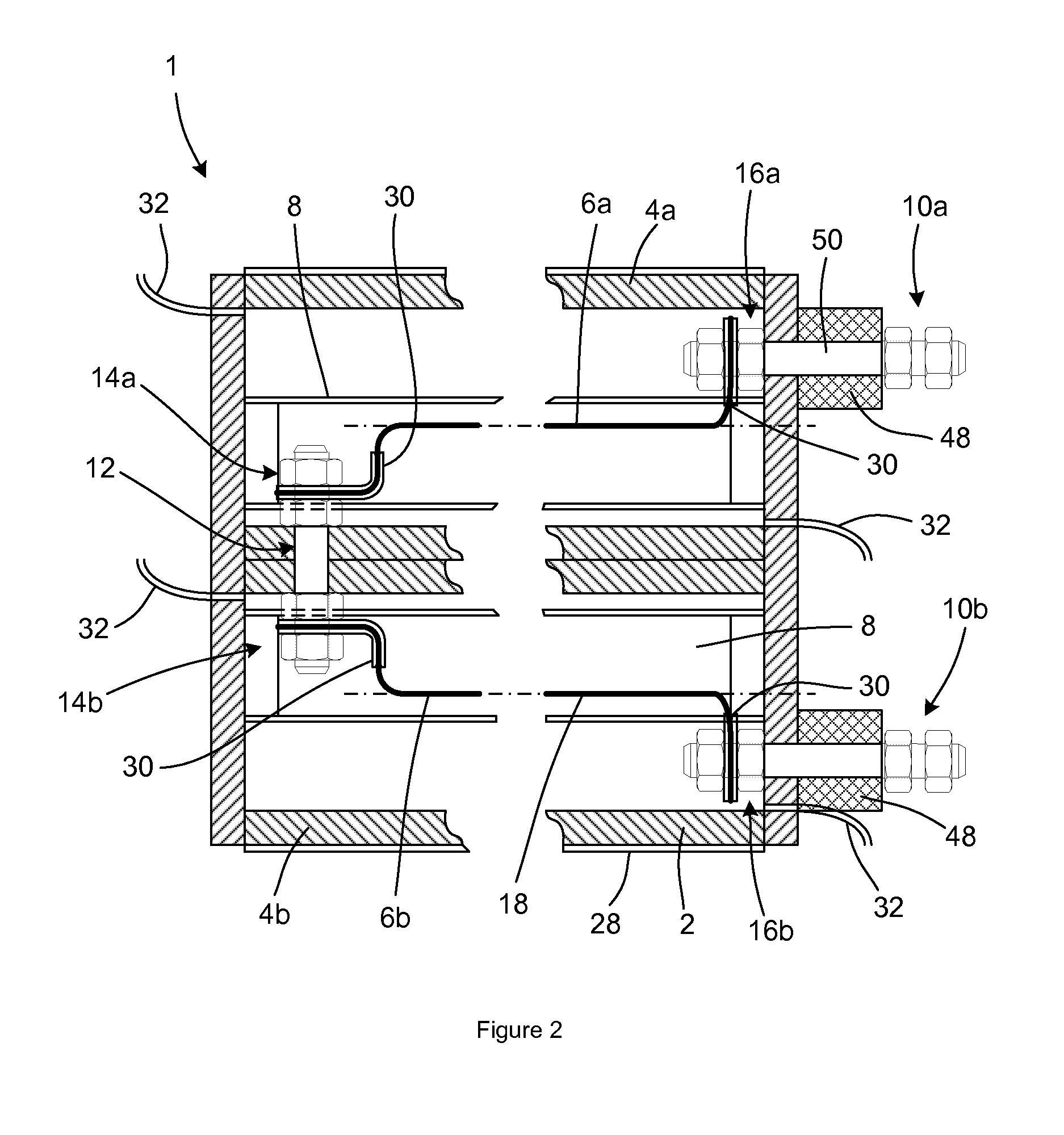Fuses
a technology of fuse and fuse body, applied in the field of fuse, can solve the problems of unwarranted complexity and achieve the effect of reducing the electric field enhancement factor
- Summary
- Abstract
- Description
- Claims
- Application Information
AI Technical Summary
Benefits of technology
Problems solved by technology
Method used
Image
Examples
Embodiment Construction
[0037]Throughout the following description, like components have been given the same reference numeral.
[0038]A fuse assembly 1 is shown in FIGS. 1 and 2 and includes a duct assembly 2 or housing with four ducts 4a, 4b, 4c, 4d in a 2×2 array. Each duct contains a fusible conductor element 6 (or fuse wire elements of circular cross section) and an accumulator 8 immersed in a liquid dielectric such as MIDEL 7131. More particularly, the interior of each duct 4a . . . 4d is filled with the liquid dielectric, such that the fusible conductor elements 6 and the accumulators 8 operate in a dielectric environment. The fusible conductor elements 6 extend substantially parallel to the longitudinal axis of the duct assembly 2. The fuse assembly 1, therefore, includes four fusible conductor elements 6a, 6b, 6c, 6d (i.e. n=2).
[0039]A first external terminal 10a is located at a first end of the first duct 4a. A second external terminal 10b is located at a first end of the second duct 4b. A first in...
PUM
 Login to View More
Login to View More Abstract
Description
Claims
Application Information
 Login to View More
Login to View More - R&D
- Intellectual Property
- Life Sciences
- Materials
- Tech Scout
- Unparalleled Data Quality
- Higher Quality Content
- 60% Fewer Hallucinations
Browse by: Latest US Patents, China's latest patents, Technical Efficacy Thesaurus, Application Domain, Technology Topic, Popular Technical Reports.
© 2025 PatSnap. All rights reserved.Legal|Privacy policy|Modern Slavery Act Transparency Statement|Sitemap|About US| Contact US: help@patsnap.com



